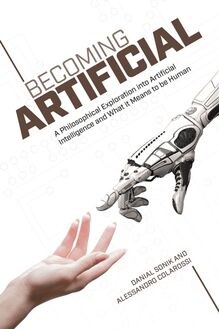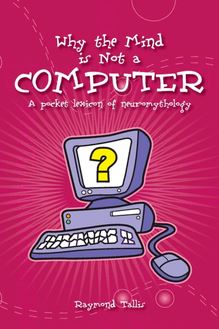-
 Univers
Univers
-
 Ebooks
Ebooks
-
 Livres audio
Livres audio
-
 Presse
Presse
-
 Podcasts
Podcasts
-
 BD
BD
-
 Documents
Documents
-
- Cours
- Révisions
- Ressources pédagogiques
- Sciences de l’éducation
- Manuels scolaires
- Langues
- Travaux de classe
- Annales de BEP
- Etudes supérieures
- Maternelle et primaire
- Fiches de lecture
- Orientation scolaire
- Méthodologie
- Corrigés de devoir
- Annales d’examens et concours
- Annales du bac
- Annales du brevet
- Rapports de stage
La lecture à portée de main
Vous pourrez modifier la taille du texte de cet ouvrage
Découvre YouScribe en t'inscrivant gratuitement
Je m'inscrisDécouvre YouScribe en t'inscrivant gratuitement
Je m'inscrisEn savoir plus
Vous pourrez modifier la taille du texte de cet ouvrage
En savoir plus

Description
Sujets
Informations
| Publié par | Andrews UK |
| Date de parution | 06 octobre 2011 |
| Nombre de lectures | 0 |
| EAN13 | 9781845403188 |
| Langue | English |
Informations légales : prix de location à la page 0,0000€. Cette information est donnée uniquement à titre indicatif conformément à la législation en vigueur.
Extrait
Title Page
AVATAR-PHILOSOPHY (AND -RELIGION) OR FAITHEISM
Edmond Wright
Publisher Information
Copyright © Edmond Wright, 2011
The moral rights of the author have been asserted.
No part of this publication may be reproduced in any form without permission, except for the quotation of brief passages in criticism and discussion.
Originally published in the UK by Societas
Imprint Academic, PO Box 200, Exeter EX5 5YX, UK
Originally published in the USA by Societas
Imprint Academic, Philosophy Documentation Center
PO Box 7147, Charlottesville, VA 22906-7147, USA
Digital version converted and published in 2011 by
Andrews UK Limited
www.andrewsuk.com
Dedication
To Samuel, Daniel, Thomas and Joel
Quotes
‘Nothing does us as much good as a fool’s cap .’
Friedrich Nietzsche,
The Gay Science , Book II, section 107
‘The imagination is the secret and marrow of civilization. It is the very eye of faith.’
Henry Ward Beecher,
Proverbs from Plymouth Pulpit , 1887
Introduction
So you have seen Avatar . Are you someone for whom all this talk of ‘Gaia’, here the Na’vi ‘Eywa’, is New-Age nonsense? And are you someone, like the atheist Richard Dawkins, for whom all this talk of divine beings, in trees or out of them, is primitive-savage nonsense? Or, from the other side, are you the Vatican solemnly warning against the film because it encourages pantheism, the notion of God identical with the universe? Or are you an orthodox Hindu protesting against this take-over of their sacred concept? Or are you the Chinese government—who have censored ‘Avatar’ for mass showing (ordering the showing of a life of Confucius instead)—for they are reading ‘Uighur’ or ‘Tibetan’ or ‘Falun Gong’ into the Na’vi—or ‘Tamil’ for the Sri Lankan government,—or the ‘Yanomami tribe’ for the Brazilian rain-forest loggers (Who’s burned the tree?)—or are you a redneck from Tennessee seeing the tribe as blatantly native-American-Indian or African-American, and James Cameron as much as a ‘Na’vi-lover’ as his ‘Jake Sully’? —perhaps a redneck already enraged by the film District 9 , which also has in Koobus Venter a sadistic soldier like Avatar ’s Colonel Quaritch, and its ‘prawn-lover’, Wikus van der Merwe—And what is more remarkable, in the last shot of the film we see that Wikus has become an avatar himself, transformed into as convincing a ‘prawn’ as Jake is a Na’vi. Then there is Neo in The Matrix (1999) who can appear in a virtual body in the digital world while he lies supine in a control room on an underground vessel. In the Bruce Willis film Surrogates (2009), all outside activity, as supposedly in the web game Second Life , is carried on through surrogate robots. We have had an avatar not so long ago on British TV screens, in the popular series Life on Mars (2006–7), in which it seems that a policeman, Sam Tyler, his head injured in an accident, lies helpless, like Neo and Jake Sully, this time in a hospital in 2006, while he experiences another life back in 1973, where he too meets a violent authority-figure, this time a police chief inspector, Gene Hunt. James Cameron’s other science fiction venture, The Terminator , can be said to have an avatar character, for the cyborg, though not monitored moment by moment by his controllers, has had an identity imprinted in his circuits from elsewhere, one defined by a single purpose. Further back in time, there is Wim Wenders’ Wings of Desire of 1987, a story of an angel upon Earth in a human body, and, by contrast, The Exorcist (1973), in which an innocent child becomes possessed by the Devil. In 1973 there was Rainer Fassbinder’s World on a Wire , which anticipates The Matrix by 32 years. The Exorcist is matched by The Invasion of the Body-Snatchers (1956), with its own forebears in Gothic literature, the tales of Doppelgängers (Stevenson’s The Strange Case of Dr. Jekyll and Mr. Hyde , Poe’s William Wilson ), and of vampires (Sheridan Le Fanu’s Carmilla , Bram Stoker’s Dracula , and most recently, Buffy the Vampire Slayer ), again stories of corruption of the innocent. Is this not something too much of coincidence?
And then there is the question of the fairy-story denouement, a ‘Here comes the cavalry to the rescue!’ (or Tolkien’s eagles or C.S. Lewis’s ‘Aslan’) in the form of bullet-proof fantasy-dinosaurs, ‘titanotheres’, bulldozing the Marines down. Is this a myth we should be serving up to our children in this world of mad fundamentalists? Isn’t it positively seditious in a world with Wootton Bassett in it? Better be with Commander James T. Kirk who at the last minute would have ordered Scottie ‘to beam the Marines up’.
One can’t be content with those kneejerk reactions above. There is a way of looking at the film that doesn’t take up any of those attitudes, one that doesn’t get trapped into fundamentalist-religious fixations on the one hand or Dawkinsian derision on the other. One aspect of the film that can’t be ignored is its spectacular fantasy world with its lithe and beautiful people—as well as the grim pterodactyl-helicopters and the ankylosaurus-air-tanks of Colonel Quaritch. The film excites wonder at its mythical beauty and grotesquerie in equal measure as myths have always done. But what has all this to do with questions of political and religious faith?
Just what is an Avatar?
The Hindus do have a right to claim the first use of the word. ‘Avatar’ as a word derives from the Sanskrit ‘ava’, down , and ‘tarati’, he crosses over . It is used of the highest god, Vishnu, who temporarily takes over a human body on earth, to create a godlike being, Krishna, who performs tasks on his behalf; he has come down and crossed over into the sublunary realm. It is obviously what we would call an ‘incarnation’, literally in the flesh , because we note the match with ‘God the Father’ who sent his son Christ to carry out his mission in the lower world. What is central to the meaning is the notion of the controller remaining in the upper world and the body in the lower carrying out his desired actions at one remove. Incarnation is a topic to which we shall return.
This relationship of control at one remove has in our time been humbly reproduced on various occasions as an outcome of our new-found electronic wizardry. Steve Moulton, a Philco engineer in the US, describes the strange experience he had when he tried on a ‘TV-hood’ over his eyes, the input to the screen of which came from a camera at the top of a building he was in (he was on the ground floor). The camera was so arranged that it moved from right to left, scanning the landscape around, exactly in accordance with the sideways movements of his head. A weird effect was produced by this matching of movement, which Moulton called ‘creepy’: he could not escape having the sensation of being up in the tower in the position of the camera looking around at the landscape. It was an avatar-experience at a minimal level (for the details, see Daniel Dennett, 1983, 24–1).
In experiments at University College, London, and the Catalan Institute of Research and Advanced Studies, Mel Slater, an investigator in this field, has been testing the effect of wearing virtual reality headsets. [1] He has been able to show that men who wore virtual reality headsets that gave them the impression that they were occupying a female body were unable, while wearing them, to shake off the perceptual impression that they had such a body. The impression, of course, stopped as soon as the headsets were removed.
My philosophy tutor at Oxford, Gareth Evans, was also intrigued by the idea of experience at one remove. In his book The Varieties of Reference (Evans, 1982, 166–70), he imagines, specifically in order to explore the notion of reference to spatial position, a naval operative inside a ship who is in control of a submarine device that is exploring the sea-bed. He compares him to ‘the experienced driver of a mechanical excavator’, who, I am sure you can recognize already, is another, if partial, avatar (the driver is still using his own eyes). The naval operative, however, is not using his eyes underwater: he has an indirect access to the scene on the sea-bed by means of a television camera. The submarine ‘is equipped with limbs, excavators, etc., and a means of propulsion remotely controllable by the subject’ (p. 166). He suggests that, if the operative were to be ‘insulated from the sounds, smells, sights and so on around him’, that is, in the ship, he could ‘play’ at being where the submarine is. Evans is still disinclined to allow him to conceive of his ‘here’ as being on the sea-bed, but, with our having read Dennett’s account, we would allow him to think of two here’s —on the sea-bed and in the ship, depending on how he is playing , that is, with consideration for what is relevant in the context of speech to someone else. Evans goes on to say that the operative might even think to himself ‘I’ll pick up that rock’—and that thought turns him into a minimal avatar. If you have lost something down a crevice, and you poke around with a stick, you will have the ‘play’ sensation of feeling with the end of the stick.
I myself, as a philosopher of mind, took the scenario one stage further, one that brings the situation nearer to the human one. I envisaged a set-up in which there were two operatives, each equipped with his own elaborate device, and they were having to discuss with each other over the phone—as they were not together—precisely what it was they were dealing with. I imagined them as bomb-disposers, which made it essential that, in sending their devices out to an unfamiliar bomb (a safe distance away), they could inspect it and
-
 Univers
Univers
-
 Ebooks
Ebooks
-
 Livres audio
Livres audio
-
 Presse
Presse
-
 Podcasts
Podcasts
-
 BD
BD
-
 Documents
Documents
-
Jeunesse
-
Littérature
-
Ressources professionnelles
-
Santé et bien-être
-
Savoirs
-
Education
-
Loisirs et hobbies
-
Art, musique et cinéma
-
Actualité et débat de société
-
Jeunesse
-
Littérature
-
Ressources professionnelles
-
Santé et bien-être
-
Savoirs
-
Education
-
Loisirs et hobbies
-
Art, musique et cinéma
-
Actualité et débat de société
-
Actualités
-
Lifestyle
-
Presse jeunesse
-
Presse professionnelle
-
Pratique
-
Presse sportive
-
Presse internationale
-
Culture & Médias
-
Action et Aventures
-
Science-fiction et Fantasy
-
Société
-
Jeunesse
-
Littérature
-
Ressources professionnelles
-
Santé et bien-être
-
Savoirs
-
Education
-
Loisirs et hobbies
-
Art, musique et cinéma
-
Actualité et débat de société
- Cours
- Révisions
- Ressources pédagogiques
- Sciences de l’éducation
- Manuels scolaires
- Langues
- Travaux de classe
- Annales de BEP
- Etudes supérieures
- Maternelle et primaire
- Fiches de lecture
- Orientation scolaire
- Méthodologie
- Corrigés de devoir
- Annales d’examens et concours
- Annales du bac
- Annales du brevet
- Rapports de stage




















